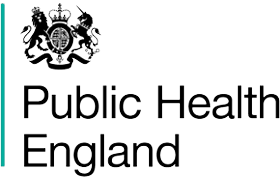Creating a digital mental wellbeing service for Londoners

Almost a third of Londoners report low levels of happiness. Half describe themselves as anxious but very few are seeking or receiving any help for their condition. All this has a negative impact on quality of life and economic productivity. Livework designed a new online service to help these hard-to-reach people.

|
Challenge
Design a service to provide inclusive, immediate help, at scale.
|
Public Health England’s mission is to protect and improve the nation’s health and wellbeing and reduce health inequalities. They do this by providing government, the NHS, industry and the public with advice, advocacy and support via commissioning and delivering services. They came to Livework to design a way of enabling people to access help whenever they need it.
NHS mental health services have around an 18 week waiting time. People often need more immediate support and a large percentage of people are unlikely to seek clinical help due to social stigma or lack of awareness. We needed to design an inclusive service that would reach all Londoners.
PHE highlighted evidence that access to information and services, peer to peer connection and safe online spaces could help. They felt that these could be delivered through a single centralised website.
Our challenge was to determine the best way to deliver mental wellbeing services at scale.
|
Over 15% of London’s adults are likely to have a common mental difficulty. Of these, only 24% are likely to be receiving clinical help for their condition.
|
|
Approach
Listening to people to find out
what they need. |
We complemented existing research with our own user-research, talking to people in their homes about how they deal with their problems. Or not. We met with people like Christina who was suffering from anxiety after being robbed at home. She was able to articulate her problems and was actively seeking support from her peers online. She’s the sort of person who would proactively seek help.
We also met people like Martin, who is divorced and digs tunnels for a living. He simply accepted anxiety and insomnia as his lot in life, without connecting them to his circumstances. Someone like Martin would never knowingly go to a government healthcare website about mental wellbeing. We learned that the real challenge is in reaching people who are unaware and reluctant to ask for help.
|
Research Focus
Meet Londoners where they are.
|
Our research led us to the realisation that to reach everyone who needs support, including those who are reluctant or in denial, we need to meet them where they are. People like this won’t go to a website to seek help. But they’re online anyway, scrolling through social media on their phones. If something appears on their timeline that resonates – it offers them a doorway out of that environment to access help.
PHE made a video to explain the service to their stakeholders. It uses Martin’s story to illustrate how the service reaches Londoners who might not actively seek help.

|
Piloting
Test and roll out.
|
To test our hypothesis, we conducted a small trial study, placing ads for assistance with insomnia on popular sites. More than thirty-five-hundred people clicked on these, indicating that social media is an effective channel for reaching Londoners experiencing mental wellbeing challenges. This is the first step towards using social media to scale the service, to connect Londoners with the information and services that can help them cope.
|
£7.5bn is spent each year by health and social care on treatment, benefits, education and criminal justice. A further £10.4 bn is lost each year to London business and society.
|
|
Outcome
An effective approach to designing public health services.
|
After further testing and piloting PHE rolled out the service, with ads on social media and other forums leading to content on the Good Thinking site. Good thinking has reported 180k users since launch. 60% of users report a reduction in stress after use.
But actually, the impact of our work has been more far-reaching. The strength of our work has meant that stakeholders from that project are now using this approach to doing design and research in public health in a growing array of areas of focus for PHE. We combined their expertise and extensive research with our user-insight informed design. The result is a service that reaches demographics that have eluded traditional public health campaigns and a growth of user-focused services that actually meet the needs of the most vulnerable in society.
“Livework have been valuable partners for PHE helping us to develop our digital strategy through service design. Livework brings a high quality of execution to the range of service design activities from user insight research to prototyping new services. Livework also interfaces well with the health system and health professionals to ensure that designs are impactful and effective.”
“Livework have been valuable partners for PHE helping us to develop our digital strategy through service design. Livework brings a high quality of execution to the range of service design activities from user insight research to prototyping new services. Livework also interfaces well with the health system and health professionals to ensure that designs are impactful and effective.”
- Diarmaid Creen, Deputy Director for Digital, PHE

I’m a designer raised by engineers, with a love of data and charts, and an obsession with storytelling. I love the way design requires a pendulum swing between tiny details and the holistic, over-arching goals.
Related content
